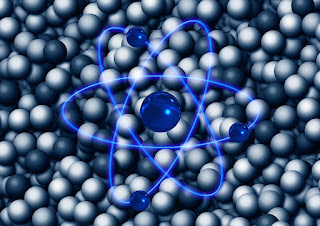Our universe is a very huge place, but it is made up of tiny particles. The elements from the periodic table make stars, planets, tables, cats etc. Since the last few centuries, scientists are trying to find the smallest fundamental particle. So what is the smallest particle in the universe? Let's find it together.
A scientist at Fermi National Accelerator Laboratory, Don Lincoln is also trying to answer this question. In the lab he and other scientists use a particle accelerator to smash tiny particles, and then they carefully analyze the debris. Lincoln said we can calculate the size of particles in two ways, either we can calculate the mass of particles or measure the physical size by calculating the diameter of particles.
In terms of mass, neutrino is the lightest non-zero mass particle. But yet we don't know the exact mass of a neutrino because the instruments we use to estimate the mass of fundamental particles are not advanced enough to calculate the mass of sensitive neutrinos, Lincoln said.
Neutrinos are the second most abundant particles in the universe after the photons (photons behaves more like wave as compared to particle). While you are reading this article, trillions of neutrinos are passing through your body every second! Neutrinos weigh nearly nothing, and travels with a speed close to the speed of light.
An atom consists of neutrons, protons and electrons. Neutrons and protons reside in the nucleus while electrons can be found in the nucleus or anywhere around the atom, an electron does not have a definite position. Size of an atom is around 5 × 104 times larger than its nucleus. Mass of an electron is almost zero, but its still weighs 5 × 105 times more than a neutrino.
Scientists use electron volts (eV) to calculate the mass of tiny particles. The actual unit is eV/C2, in which C2 represents the square of the speed of light. One eV is equivalent to 1.6 × 10-19 Joules (approx.). For simplification, physicists use a set of units in which speed of light is 1. To calculate the mass of subatomic particles, then we have to use the most famous equation of all time, Albert Einstein's E = MC2 to get the mass in kg.
Weight of an electron is around 5,11,000 eV, it is equivalent to 9.11 × 10-31 kg. For comparison, a proton weighs around 938 millions eV which is equals to 1.67 × 10-27 kg.
If we talk in terms of mass, the largest fundamental particle is top quark which weighs nearly 172.5 billions eV. Quarks are also the fundamental particles and according to our current knowledge, it can't be broken into more parts.
Physicists have found 6 types of quarks, these are : up, down, charm, strange, top and bottom quark. Protons and neutrons are made up of up and down quarks, up and down quarks weighs 9 millions and 5 millions eV respectively. If we do a comparison, a top quark weighs 57,500 times more than an up quark.
While considering the physical size of particles, it becomes harder to determine the smallest particle. Physicists know the physical size of some particles but yet the size of many fundamental particles are unknown.
The tiny thing that nowadays people hear in their daily lives is virus. But when we compare the virus with subatomic particles, virus seems to be a huge thing. The length of a virus is about 250-400nm (1nm = 10-3m), whereas the diameter of a typical atomic nucleus is only 10-4m.
In current time, the smallest size that physicists can measure is 2000 times smaller than a proton (5 × 10-20m). We know that quarks are smaller than this size, but we don't know exactly by how much. According to our latest knowledge, quark is the smallest particle in the universe (physical size).
Source : Live Science

